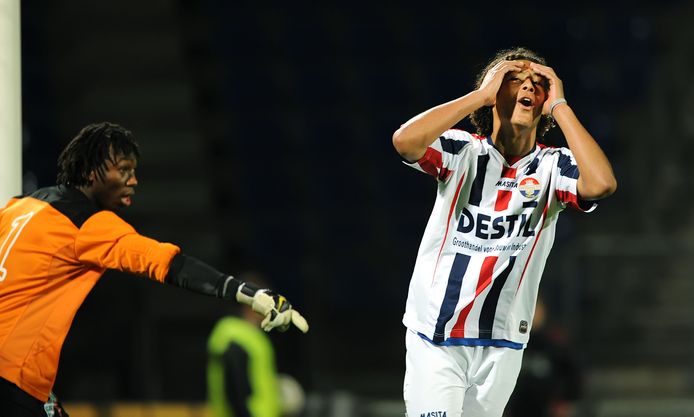EOTK has been given a sneak preview of a new book by Dutch journalist Jan Willem Spaans, named ‘Virgil van Dijk: A day in the life’ – which you can grab here.
The book focusses around van Dijk’s story, from gangly teenager to the world’s best centre-back and Champions League winner.
And this particular section especially pleases us. It explains how the scout who took VVD to FC Groningen first saw the defender and was flabbergasted to find out he was an amateur not even training with Willem’s first-team.
We’ll let Spaans take it up from here:
If FC Groningen had to conjure up a five-a-side team of their former players, they could put out Virgil alongside Luis Suarez, Arjen Robben, Dusan Tadic and Filip Kostic. Not too bad for a side from an isolated city in the north of the country. That the former member city of the Hanseatic League got to enjoy Virgil as a first-team player for two seasons, is partly down to good work by scout Grads Fühler and also owes to geographical chance.
Fühler had not been following him for a long time. The discovery occurs on Saturday, October 3, 2009. Willem II’s U18’s, at the time sharing an academy with RKC, face PSV Eindhoven. Fühler lives in Eindhoven at that time, he has a scouting trip to Belgium planned for that weekend, but decides to make a quick stop in Tilburg too after looking at the fixtures. “Virgil immediately stood out to me, he was wearing the captain’s armband too. Obviously, everybody knows about his appearance. But he also seemed to find it easy to play the game, played passes over forty, fifty yards without problems and he already found it simple to win the one-on-ones. But he did already seem to take things a little lightly, it all looked a bit lax. I got the impression that the boy needed a challenge. He needed to move to a higher level, get some training in and develop himself further. What I saw did really impress me a lot.”
But that’s just the first step. FC Groningen was a step up from Willem II on every front back in 2009, it still isn’t a widespread occurrence that a youth player moves to the other end of the country to still play in the same division. Fühler decides to go and give it a try anyway. He can’t believe his luck when he hears of Virgil’s status with the Tricolores, as if he were an art connoisseur finding a forgotten-about Monet painting lying around somewhere. “At half-time, I popped into the academy’s clubhouse. I ended up in conversation. I wanted to know how Virgil’s situation at Willem II is. The man tells me he’s an amateur, that he doesn’t train with the first team and that he only plays with the U18’s. Well, I immediately called Henk Veldmate, my superior at Groningen at the time. I said ‘Henk, I’ve spotted someone here. He’s not tied down, and I think we need to try and get him to come to Groningen.’ Then Henk went to have a look for himself. Forty-five minutes in, he calls me and confirms what I had said earlier. We were going to take action.”
It’s crazy to think of a time when the phenomenon that is van Dijk was an amateur – and when you consider he was 18 – it shows he was a late developer.
The fact he was still at Southampton aged 26 and had under 15 caps for the Netherlands is equally baffling to us.
But he’s undeniably found his level and fulfilled his potential now. In fact, we’ve never seen a central defender as good as van Dijk in our lifetime.
Now aged 28, van Dijk has another four or five years left at the very top – and we hope he racks up a very large amount of trophies during what could be a legendary peak.
